Fine-Scale Shark Habitat Mapping with YSI’s i3XO EcoMapper
I’m a Missouri State University (MSU) biology major who grew up with dozens of landlocked undergraduate biology majors dreaming of becoming marine biologists. It’s pretty rare to find a Midwesterner who actually does just that. But recently I got to talk to Emily Spurgeon (@Emily_Spurgeon) and her graduate advisor Dr. Chris Lowe (@CSULBsharklab), from Cal State’s Shark Lab.
Emily’s a Minnesota native who went to California Polytechnic State University in San Luis Obispo to earn her B.S. in Biological Sciences with a concentration in marine biology and conservation, worked for an environmental consultant on the west coast, and is now studying at one of the most recognizable marine biology programs in North America, studying habitat selection by juvenile white sharks. Pretty cool for one who hails from The Gopher State!

The Shark Lab has been churning out all sorts of new perspectives over the years, as it is where founder Don Nelson’s legacy of developing and deploying new technologies and training generations of scientists has vastly expanded the world’s understanding of sharks. A Shark Lab alumnus himself, I wanted to talk to Lowe and Emily about how YSI’s i3XO EcoMapper fits into that legacy, and into her graduate research.
Temperature and Sharks
Here’s how Emily described the topic of her Master’s thesis:
“I'm looking at specifically the aggregations that form of juvenile white sharks in the nursery habitat in the Southern California area. I'm looking into [whether] temperature is influencing where and how they're spending their time in that aggregation habitat.” There’s more to the project than just temperature, but let’s pause for a moment to evaluate why temperature matters.
Reaching waaaaaaaay back to my vertebrate biology course at MSU, I recalled that sharks, being fish, are ectotherms. A “cold-blooded” animal is one whose body temperature matches that of their environment. Surely it makes sense that cold-blooded sharks might aggregate around warmer waters. Like a lizard on a hot rock, I thought to myself. So I asked, why would these aggregations be unexpected? Won’t an ectotherm go where the temperature is most favorable for their physiology?
That’s when Dr. Lowe informed me that white sharks are actually warm-blooded.
In fact, while most sharks are ectotherms, there are five species of sharks known to be endotherms, and the species that Emily studies, Carcharodon carcharias, is one of them. While this was suspected as early as the mid-1980s, it was definitively shown by Goldman in 1997.
In a landmark study, acoustic telemetry captured the stomach temperatures of white sharks while water column temperatures where they dwelled were concurrently recorded. The finding was that the sharks’ stomachs were as much as 14.3⁰C warmer than the surrounding water[1]. Since then, it has been of great interest to learn how endothermy affects the behavior and exceptional predatory abilities of white sharks.
Migratory behavior is one example of a behavior that is influenced by white shark endothermy. Emily explained that white sharks show up in Southern California in the summertime when the water is warmer. But in the winter, when the water temperature drops, they swim down to Mexico. Prior work from the Shark Lab showed that temperature was a big driver for this seasonal migration.
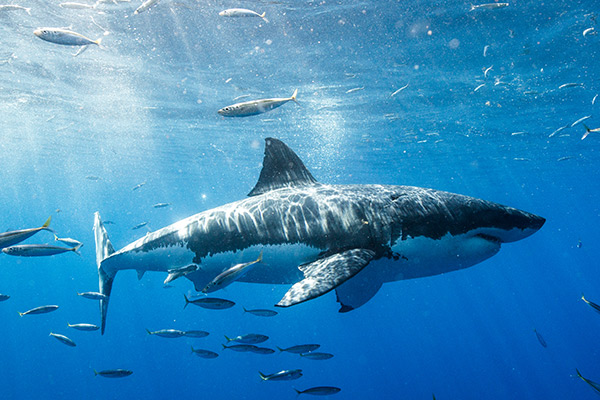
Why would that be if white sharks are endotherms, I wondered? Since they regulate their body temperatures I would think they would be less driven by temperature.
The answer may have something to do with the juvenile white sharks. There are still a lot of mysteries about precisely where and how females bear their pups (yes, “pups”!), but we do know that they are not exemplary models for motherhood by mammalian standards. Pups are on their own from the start, sometimes even becoming prey to their own parents.
Perhaps to give the pups a fighting chance, females give birth near “nurseries,” typically near-coastal, shallower waters that are also warmer. Spending the first years of their lives in a nursery is thought to help younger sharks find prey, avoid becoming prey themselves, and pack on the pounds that will make them more effective at hunting and breeding in cooler waters when they become adults.
Thus, adult migrations might be more for ensuring the survival of the next generation, rather than for the survival of the migrating adult.
Further, unlike other species of sharks or other areas of known shark nurseries, juvenile white sharks along the California coast seem to experience much more dynamic nursery habitats, as described in this 2021 paper from Lowe’s team[2].
Many things can cause water temperatures to fluctuate in a highly localized fashion. Emily explained that temperatures can drop because of tidal events, and along the central and southern California coast there is a lot of upwelling that leads to mixing in the water column. Sometimes this leads to stratification and microenvironments of distinctly different temperatures.
These dynamic habitats might drive white shark juveniles to make some decisions regarding where to hang out. It appears that may be the case, because juvenile aggregates do seem to disassemble and reassemble somewhere else from time to time, even within the range of the nursery. This is critically important to understand for ongoing conservation efforts.
Emily’s research explores the question of whether temperature, and indeed other water quality parameters like turbidity, dissolved oxygen, and chlorophyll, affect those aggregations on a fine scale.
But how fine of a scale? How do you know where to begin to capture these decisions? An interesting observation in the past couple of years helped the team to decide.
The observation is that even a white shark likes a day at the spa.
The Shark Spa
A couple of years ago, divers from Tenera Environmental had been performing underwater surveys to study the possible impacts of a nuclear power plant’s outflows of warmer water. While diving they saw quite a few sharks uncomfortably nearby. This was surprising because the site of the study was very close to shore—within about 20 m—where one might see juveniles but would not expect to see adults. Of course, it also made them nervous—were the sharks attracted to the area because of the divers?
They called the Shark Lab to check it out. A technician for a private consultant at the time, Emily assisted Lowe’s team in attaching acoustic transmitting devices to the sharks so that, via receivers placed in the area where the divers had been, they could observe sharks coming and going.
The acoustic telemetry revealed that the area was both warm and very popular with sharks. Like, a lot of sharks. More sharks than the divers had even suspected, in keeping with a top predator’s ability to avoid being spotted. Plus the sharks were hanging out for a pretty long time, appearing to leave when one might speculate they got hungry since they weren’t feeding in the area (thankfully!).
Dr. Lowe called this spot “the spa” and not only did it introduce Emily to the Shark Lab, but also it provided important insight into how she might attack her thesis topic. An interesting thing about the spa is that the sharks themselves were adults, rather than juveniles. Perhaps a day at the spa was just that—a time to relax and recharge, to not burn as much energy swimming around, to not hunt.

When, how, and why sharks might select such microhabitats might be easier to reveal by studying juveniles moving around in those dynamic nurseries. The limited endothermic capacity of juveniles might lead them to make choices on a fine scale, in time and space. Studying aggregations of juveniles might enrich opportunities for learning more about their preferences, not just as it relates to temperature but also as it relates to other water quality parameters.
Now the team had an idea of the differences in scale between, say, migratory patterns versus day-to-day behaviors regarding resting, hunting, and so forth. These were two vastly different scales that would require different approaches to study. The Shark Lab were already pros at looking at large scale movements, but correlating shark movement and areas of juvenile aggregation with water quality parameters of interest led them to YSI’s autonomous underwater vehicle (AUV), the i3XO EcoMapper.
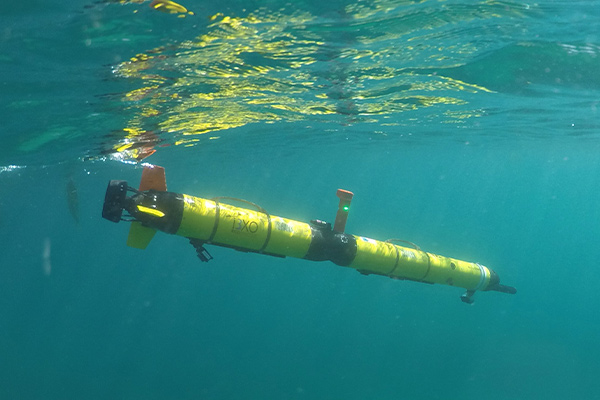
YSI’s i3XO EcoMapper Fills the Spatial Gap
In a previous blog, I explained how vehicles like the i3XO EcoMapper, as well as YSI’s HYCAT and rQPOD, can fill spatial gaps in studies. (Learn more, Water Quality Monitoring with Vehicles for Better Coverage). At that time my mind was more on expanding one’s spatial range, but here, the goal is to obtain a higher-resolution look over a smaller area than these scientists are accustomed to covering.
The Shark Lab already has a well-earned reputation for embracing and building innovative technology to achieve its research aims. It is one of the largest acoustic telemetry labs on the west coast, thanks to Don Nelson’s pioneering work with ultrasonic telemetry that to this day is used to track the movements of sharks. Nelson’s remote sensing devices were the predecessors of today’s smaller, rechargeable, long-enduring transmitters and receivers that the Shark Lab is known for.
The receivers used by the Shark Lab are placed at long ranges, 500 m or more apart, along the California coast, and they have integrated temperature sensors. But Lowe states, “…when you're looking at remote sensing data from a sea surface temperature map, or chlorophyll data, in a way that's kind of useless because as we're learning the ocean is a very dynamic place. Once you get below the top three millimeters of the ocean, it's very different.”
He goes on to say, in agreement with Emily, “We need to do that at the level of 10 meters, 5 meters because that's how the animals are making decisions.”
In order to do that, Lowe sees two choices: put devices on the animals that will measure water quality, or assess the surrounding environment. Ideally, you’d do both, but if you can only do one he prefers the latter because it reveals what’s available to the animal. That makes the i3XO EcoMapper an excellent choice for filling in the finer scale data.
Lowe worked with YSI and our partner Ocean Server (now L3 Harris) to customize the i3XO to suit their needs. Of course, a main feature is the integrated EXO sonde, bearing sensors for temperature, depth, chlorophyll, turbidity, salinity, and dissolved oxygen. It also has an InnovaSea digital omni-directional hydrophone and an on-board acoustic receiver capable of detecting tagged sharks and fishes while running missions. The AUV is also equipped with forward- and aft-facing video cameras (a down-facing camera could also be added) capable of recording HD video for up to two hours. They’ve found that the system can operate for about 8 hours traveling up to 2 knots, at depths up to 100 m.
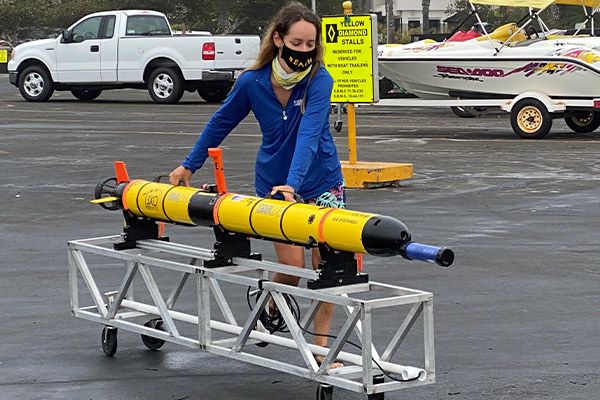
This summer Emily will be running the vehicle every other week along a roughly two-mile stretch of beach where juvenile white sharks are known to swim. Even early missions from last year are helping them to adapt Emily’s overall study.
For example, thus far it appears that the water in the area is very green, occluding visibility. That’s good for sharks, but not great for the cameras. The water is not actually very turbid, generally in the 10 NTU or less range, with occasional 50-80 NTU spikes. The color and NTU seem to prevent the cameras from seeing much further than a meter in front of the vehicle.
Parameters related to algae and primary productivity might turn out to be very important. Last year there was a red tide at a site where sharks had been aggregating, and the acoustic telemetry showed that the sharks disappeared. When the red tide dissipated, the animals came back. Why? We don’t know, but Lowe speculated that dissolved oxygen might have been a factor. This year, having the i3XO ready to go, they hope to capture a similar event with the AUV, carefully evaluating DO and chlorophyll alongside the movements of the sharks.
For this particular site, the flexibility of the water quality component of the platform even has the team considering using other water quality sensors. For example, rather than turbidity, I asked whether they might be interested in looking at fDOM (Fluorescent Dissolved Organic Matter).
Lowe thought it might be a good idea because at one end of the site a creek leads into it. It’s usually dry, but during spring and fall seasonal rain events it experiences plankton blooms. On the other end of the aggregation's site is an estuary that’s closed during certain tides, but then gets “blown open” during storm events, for example. Both of these, the creek on one side and the estuary on the other, might be big contributors to organics.
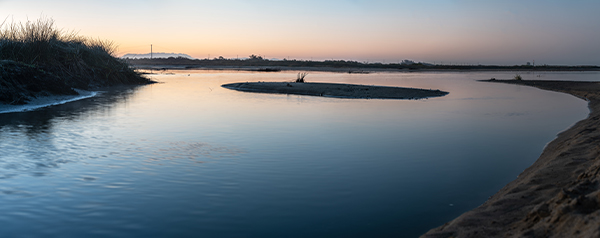
By comparison, other aggregation sites aren’t like this at all. “Some are nice, clear, rocky reefs, visibility is a little bit better. At one such site, we get strong thermoclines in very shallow conditions. So, last summer, we had surface water temperatures of about 18 or 19 degrees C, and on the bottom, in 20 feet of water, it was 12 degrees C. That’s a pretty strong thermocline in shallow conditions. But what it does is it gives the animals a warm water lens, where they can kind of hang out and warm up. And then if they want to cool down, they can just literally go 20 feet.”
Emily said they actually see the sharks do that, especially in summer when those surface temps are nice and warm.
At yet another site closer to San Diego there is only a 4-degree temperature difference (from 22 to 19⁰C) over a wider depth, and the water quality they suspect is quite different. Why are the sharks aggregating there?
Lowe stated that Emily has to “hedge her bets, trying to do enough surveys in locations where they know there are sharks, as well as locations where they don’t know there are sharks but with similar topography, conditions, protection, etc., and then compare the data to see if any factors are revealed that drive the sharks to those aggregation sites.”
That means a lot of missions, in a lot of locations, for many years beyond just Emily’s project. This is why the i3XO brings such great value to the Shark Lab. It is easy to move around and maintain (other AUVs may require a crane, more people, or bigger boats), it is flexible and compared to AUVs deployed by government agencies and others, it is affordable and easy to use.
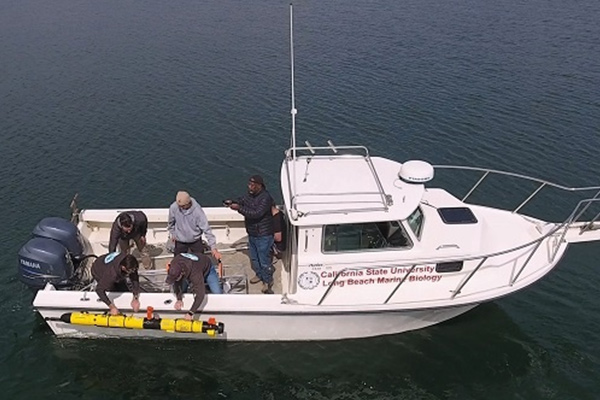
For those who don’t need to do as many surveys, don’t have the staff to take care of an AUV, or just want to “try before you buy,” the i3XO can be explored via a service that YSI offers. This is a great way to generate data that can support a grant application to purchase a vehicle, define the scope of a future study, or accomplish a one-time task such as bathymetric surveys of reservoirs or discharge ponds.
Sharks Are Cool, But Why Are We Doing This?
Expecting the usual doomsday response, I asked Lowe how climate change was affecting sharks.
“For white sharks, it may be that our current climate situation is a positive thing for them. We're seeing population growth and that could be because the babies are doing better. The water conditions are warmer, they can grow faster. And that's all dependent on there being adequate food, which there appears to be. So it could be that right now, climate change means white sharks are a beneficiary.”
If that answer surprises you, it’s not because Dr. Lowe is a climate change denier. Rather, he is not a fan of “the-sky-is-falling science,” as he made clear in his article in issue #9 of the Save our Seas Foundation’s magazine (2018).
There, Lowe pointed to the recoveries that animal populations have made as we’ve changed our behaviors through things like the Clean Water Act and the Marine Mammal Protection Act of the early 1970s. Such recoveries are still overcoming the negative effects, if they exist, that climate change might be having on sharks, and exemplify that we are able, as a society, to effect positive change through policy as well as everyday choices.
Thus, cutting out all the hype about sharks, looking objectively at what we are learning, and reflecting upon what we’ve done well, will lead to the best conservation practices for not only sharks but for our oceans in general. YSI is proud to be a part of that, by providing the instrumentation that supports studies of our oceans.
[1] Goldman, K. Regulation of body temperature in the white shark, Carcharodon carcharias. J Comp Physiol B 167, 423–429 (1997). https://doi.org/10.1007/s003600050092
[2] Anderson JM, Burns ES, Meese EN, Farrugia TJ, Stirling BS, White CF, Logan RK, O’Sullivan J, Winkler C and Lowe CG (2021) Interannual Nearshore Habitat Use of Young of the Year White Sharks Off Southern California. Front. Mar. Sci. 8:645142. doi: 10.3389/fmars.2021.645142